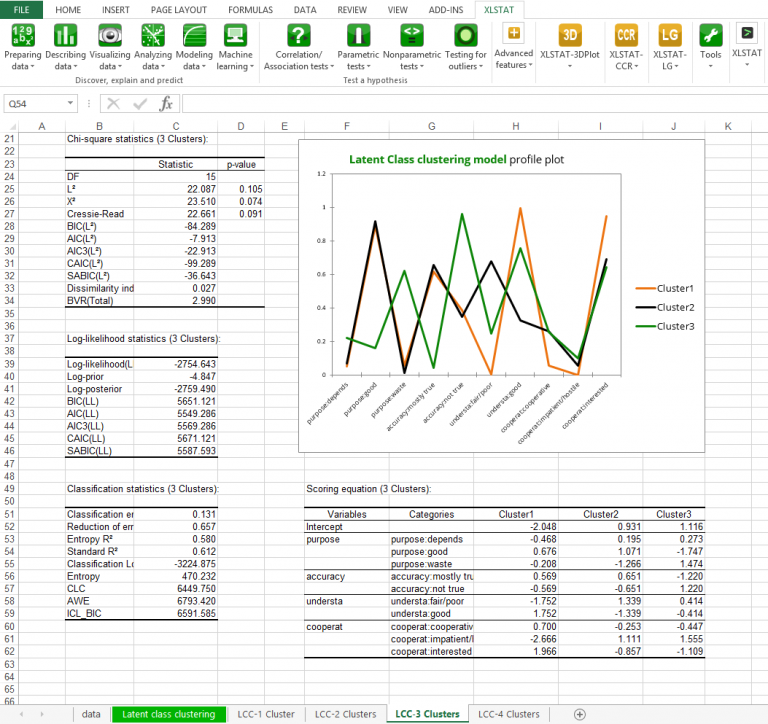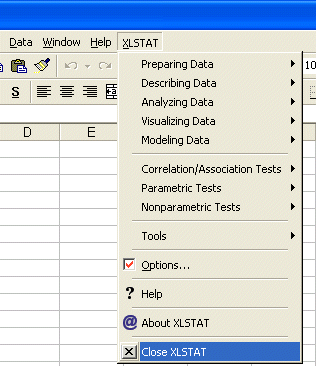

When multiple records (rows) are associated with the same case ID (in XLSTAT, case IDs are specified using ‘Observation labels’), for each round, the CV procedure assigns all records corresponding to the same case to the same fold. Typically K 1 rounds, the standard error of the relevant CV statistic is also reported. For a continuous Y, these procedures provide an alternative to traditional linear regression methods, where components may be correlated (CCR-LM procedure), or restricted to be uncorrelated with components obtained by PLS regression techniques (CCR-PLS). For Y dichotomous, these methods provide an alternative to Logistic regression (CCR-Logistic) and linear discriminant analysis (CCR-LDA). The linear part of the model is a weighted average of K components S = (S 1, S 2, …, S K) where each component itself is a linear combination of the predictors. As an option, the CCR step-down algorithm may be activated to exclude irrelevant Xs. The methods are based on Generalized Linear Models (GLM). Statistical Innovations has since then been a precursor for many techniques that have become a standard in data analysis and data mining.įor more information Statistical Innovations, please visit The four regression methods available in the Correlated Component Regression (CCR) module use fast cross-validation to determine the amount of regularization to produce reliable predictions from data with P correlated explanatory (X) variables, where multicollinearity may exist and P can be greater than the sample size N. Statistical Innovations, a Boston-based firm which specializes in innovative applications of statistical modeling, was started in 1981 by Dr.


The XLSTAT-CCR module is based on the CORExppress® technology developed by Statistical Innovations.


 0 kommentar(er)
0 kommentar(er)
